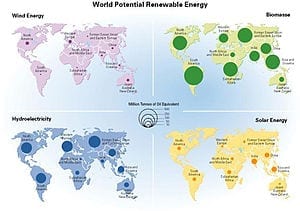
- Image via Wikipedia
Improving turbines, which lie at the core of a modern power grid, is all about standing up to the heat
At the spinning heart of the modern electric grid lies what used to be called the dynamo—a generator composed of stacks of copper rotating in an electromagnetic field. But it’s a turbine that spins the dynamo—and efforts to squeeze more efficiency and cut greenhouse gas emissions and other pollution from a smart grid may rest on improving this core technology.
“The best emissions are emissions you don’t make in the first place,” notes Charles Soothill, senior vice president for technology at Alstom Power, a maker of turbines.
Heating water into steam to spin a turbine is the basic principle behind most power generation. Today, for instance, the firebox of the Mountaineer power plant in New Haven, W.Va., consumes nearly 14,000 kilograms of coal a minute, enabling the plant to pump out 1,300 megawatts of power. Reaching temperatures of more than 500 degrees Celsius, the steam pours through pipes and around a turbine—a 200-metric-ton, 30-meter-long steel shaft outfitted with blades and vanes to help it spin as the steam expands and cools.
That mechanical spinning in turn rotates copper-filled tubes in a magnetic field. This induces current in the copper, which then courses through the modern electricity grid—a giant circuit—to your house.
“Steam turbines and gas turbines are a means of converting power in the form of either steam or gas into mechanical power and electricity,” Soothill explains. “These machines have been around for a long time—more than 120 years.”
In that time, the basic principles of a spinning turbine have not changed much. The majority of power plants—whether coal, natural gas, nuclear or even wind—rely on a turbine to spin the generator and produce vast quantities of electricity. Improving these turbines saves fuel and pollution. “You can save 9 billion pounds of CO2 per year from a one-point efficiency improvement,” says engineer Eric Gebhardt, a general manager at General Electric (GE) Energy, another turbine maker.








![Reblog this post [with Zemanta]](http://img.zemanta.com/reblog_b.png?x-id=7131e7b4-f665-4db0-856e-aa73a7365107)
